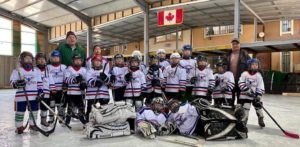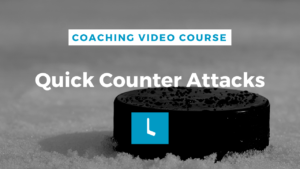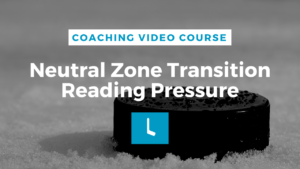(Transcribed from How to Play Hockey: Our Minor Hockey Coaching Course.)
Everyone loves support whether it’s from friends, family, teammates or colleagues. The same goes for play on the ice. If you want to just worry about yourself, play golf or chess. Hockey is an amazing team game that calls on players to help each other to have success. Setting up a goal, creating space, or bailing out a teammate who needs help are all examples of support. Here we will learn how and when to be supportive and how it can help the whole team be successful.
Purpose of Video:
To support in sports means to help, that is, to help your teammates: mentally, physically, or vocally. We learn about all three components to apply them to our defensive and offensive support within the game.
[maxbutton id=”2″ ]
Vocal Support: This type of support means to call for the puck, to communicate, to tell your defensive partner which player you are guarding.
Mental Support: This is to make the decision when your team loses the puck that you are going to switch from offense to defense. Making such a decision prepares you to get in the right position physically. Sometimes players don’t make this mental decision and instead ‘cherry pick’, stay high, or “float”. In either case, they are not supporting in a defensive position.
Physical Support: To support physically on the ice can happen when we have the puck or when we don’t have the puck.
Example:
Physical Support on Offense: You can support on the offense if your teammate (forward number one/ F1) is battling for the puck in the corner, and there are two defenders, the defenseman and the center on that player (D & C) and the other offensive forward is standing in front of the net waiting (F2), when they can and should come in to help. This is an example of moving towards the puck to support .
Physical Support on Defense: To support on defense, imagine that we are attacking in the bottom direction and your defender has the puck. That defender needs a partner staggered or “hinged” back on a diagonal. If they are battling for the puck and they lose it, that support is there to come and help. If that support is not there, and they are “cheating” looking for a pass, there is no one to pass to, then this player can’t be as aggressive or as confident. If the player with the puck were to lose the puck, it means there’s a breakaway in their zone.
We talk a lot about supporting one another and supporting the puck, in the tactics and the strategy of the game, both offensively and defensively.
Looking to download half ice hockey practice plans, goalie drills for teams (not a goalie coach?!) or small area games drills? We’ve got you covered too. Click here. Perfect for recreational level coaches.





